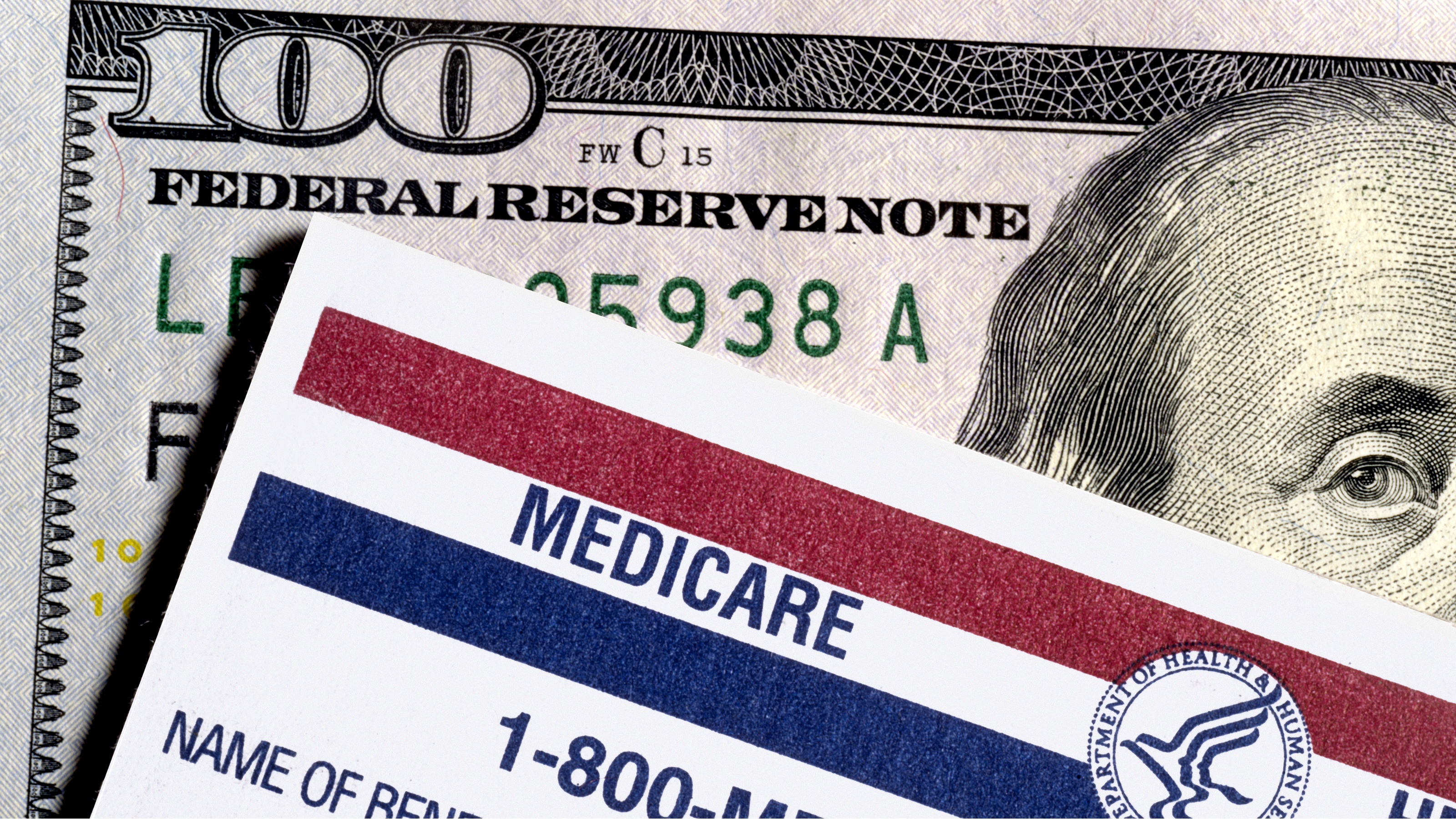June CPI Signals Tariff Impact: What the Experts Say
The June CPI report shows that inflation is accelerating, but at a pace that's in line with economists' expectations.


The latest Consumer Price Index (CPI) report indicated a slight impact on inflation from President Donald Trump's tariff policies, although the acceleration was in line with what economists expected.
According to the Bureau of Labor Statistics, headline CPI was up 0.3% month over month in June, faster than May's 0.1% increase but matching the 0.3% increase economists called for.
The CPI was 2.7% higher year over year, an uptick from the 2.4% rise seen the month prior and in line with economists' projections.

Sign up for Kiplinger’s Free E-Newsletters
Profit and prosper with the best of expert advice on investing, taxes, retirement, personal finance and more - straight to your e-mail.
Profit and prosper with the best of expert advice - straight to your e-mail.
Shelter was the "primary factor" for the monthly increase in headline CPI, according to the BLS, up 0.2% from May to June. Energy costs were also on the rise in June, up 0.9% as gas prices jumped 1%.
Core CPI, which excludes volatile food and energy prices and is seen as a better measure of underlying inflation trends, was up 0.2% month over month and 2.9% year over year. Both figures were higher than what was seen in May but in line with economists' forecasts.
"While today's CPI release showed some early signs of tariff impact, on the whole, underlying inflation remained muted," says Kay Haigh, global co-head of Fixed Income and Liquidity Solutions in Goldman Sachs Asset Management.
Haigh warns that price pressures "are expected to strengthen over the summer and the July and August CPI reports will be important hurdles to clear."
While she expects the Fed to remain in wait-and-see mode for the time being, rate cuts could resume this fall if "underlying inflation ... continue to prove benign."
According to CME FedWatch, futures traders are now pricing in a 60% chance the Fed will issue its next quarter-point rate cut at its September meeting, little changed from a week ago. The betting odds are for just one additional rate cut by the end of the year.
As for the next Fed meeting, which kicks off on Tuesday, July 29, and concludes on Wednesday, July 30, it's all but guaranteed that the central bank will hold interest rates steady.
With the June CPI data now in the books, here's some of what economists, strategists and other experts around Wall Street have to say about the results and what they could mean for investors going forward.
Experts' takes on the June CPI report

"This data confirms what many have been warning: tariffs are potentially moderately inflationary, and they're beginning to show up in consumer prices. However, we'll likely need a larger sample size to fully confirm this trend. The market is now watching how the Fed will respond. While the central bank has been preparing for a policy pivot, today's report complicates the picture – the softer core print offers some relief, but the hotter headline figure could give the Fed pause on cutting rates too soon. " – Matt Mena, Crypto Research Strategist at 21Shares
"The big question for the inflation picture is tariffs. It's taking some time for tariffs to show up in the data, but it's highly likely that a tariff-driven inflation reckoning is coming. The tariff picture is as murky today as it was in early April, but the only thing that has changed has been the market's reactions to the administration's jostling. We are only just beginning to see tariffs work their way through to consumer prices, and we are bracing for an additional uptick in consumer prices over the coming months." – Skyler Weinand, Chief Investment Officer at Regan Capital
"This was the first of three reports before the September meeting as July cuts seem to be off the table. Today's readings did nothing to change that stance but put the focus squarely on September. Clearly, inflation remains sticky, but it is far from changing course. The continued tariff uncertainty remains just that – uncertain. If the data stays in line with expectations, then 'the one data point at a time' stance the Fed usually follows should take precedence over the uncertainty of tariffs and thus a cut in September." – Jay Woods, Chief Global Strategist at Freedom Capital Markets
"Traders were keeping a close eye on this morning's CPI report and the Fed was probably looking even more closely at it as the internal debate continues into whether or not they should be cutting interest rates right now. If it's true that inflation is staying in check, then the Fed can go ahead and cut interest rates – potentially as early as September – but if subsequent reports show a different story, then the Fed is going to have to stay on hold even longer." – Chris Zaccarelli, Chief Investment Officer for Northlight Asset Management
"We expect tariff revenues to continue to trend higher over the next few months. This supports our view that tariff impacts on the economy are still in the pipeline. We expect goods inflation to accelerate, but the biggest question mark is around services inflation, which is sensitive to the health of the labor market. Services inflation has been muted over the past few months thanks to weakness in motor vehicle insurance, housing, and tourism. " – Ryan Sweet, Chief U.S. Economist at Oxford Economics
"This is kind of a perfect inflation report for the Fed, just hot enough to justify their policy of holding rates steady, but not reflective of runaway prices. The question now is whether the labor market holds up throughout summer, and it probably will. If we see strong corporate earnings for the second quarter, growth forecasts for the U.S. may be revised higher." – Scott Helfstein, Head of Investment Strategy at Global X
Related content
Profit and prosper with the best of Kiplinger's advice on investing, taxes, retirement, personal finance and much more. Delivered daily. Enter your email in the box and click Sign Me Up.

With over a decade of experience writing about the stock market, Karee Venema is the senior investing editor at Kiplinger.com. She joined the publication in April 2021 after 10 years of working as an investing writer and columnist at a local investment research firm. In her previous role, Karee focused primarily on options trading, as well as technical, fundamental and sentiment analysis.
-
 If You'd Put $1,000 Into Berkshire Hathaway Stock 20 Years Ago, Here's What You'd Have Today
If You'd Put $1,000 Into Berkshire Hathaway Stock 20 Years Ago, Here's What You'd Have TodayBerkshire Hathaway is a long-time market beater, but the easy money in BRK.B has already been made.
-
 New SALT Cap Deduction: Unlock Massive Tax Savings with Non-Grantor Trusts
New SALT Cap Deduction: Unlock Massive Tax Savings with Non-Grantor TrustsThe One Big Beautiful Bill Act's increase of the state and local tax (SALT) deduction cap creates an opportunity to use multiple non-grantor trusts to maximize deductions and enhance estate planning.
-
 If You'd Put $1,000 Into Berkshire Hathaway Stock 20 Years Ago, Here's What You'd Have Today
If You'd Put $1,000 Into Berkshire Hathaway Stock 20 Years Ago, Here's What You'd Have TodayBerkshire Hathaway is a long-time market beater, but the easy money in BRK.B has already been made.
-
 New SALT Cap Deduction: Unlock Massive Tax Savings with Non-Grantor Trusts
New SALT Cap Deduction: Unlock Massive Tax Savings with Non-Grantor TrustsThe One Big Beautiful Bill Act's increase of the state and local tax (SALT) deduction cap creates an opportunity to use multiple non-grantor trusts to maximize deductions and enhance estate planning.
-
 Know Your ABDs? A Beginner's Guide to Medicare Basics
Know Your ABDs? A Beginner's Guide to Medicare BasicsMedicare is an alphabet soup — and the rules can be just as confusing as the terminology. Conquer the system with this beginner's guide to Parts A, B and D.
-
 I'm an Investment Adviser: Why Playing Defense Can Win the Investing Game
I'm an Investment Adviser: Why Playing Defense Can Win the Investing GameChasing large returns through gold and other alternative investments might be thrilling, but playing defensive 'small ball' with your investments can be a winning formula.
-
 Stock Market Today: Powell Rumors Spark Volatile Day for Stocks
Stock Market Today: Powell Rumors Spark Volatile Day for StocksStocks sold off sharply intraday after multiple reports suggested President Trump is considering firing Fed Chair Jerome Powell.
-
 Callable CDs Have High Rates: We Still Don't Recommend You Get Them
Callable CDs Have High Rates: We Still Don't Recommend You Get ThemInvestors must carefully consider the trade-offs, as falling interest rates could lead to reinvestment at a lower yield and make selling on the secondary market difficult.
-
 Five Big Beautiful Bill Changes and How Wealthy Retirees Can Benefit
Five Big Beautiful Bill Changes and How Wealthy Retirees Can BenefitHere's how wealthy retirees can plan for the changes in the new tax legislation, including what it means for tax rates, the SALT cap, charitable giving, estate taxes and other deductions and credits.
-
 Portfolio Manager Busts Five Myths About International Investing
Portfolio Manager Busts Five Myths About International InvestingThese common misconceptions lead many investors to overlook international markets, but embracing global diversification can enhance portfolio resilience and unlock long-term growth.